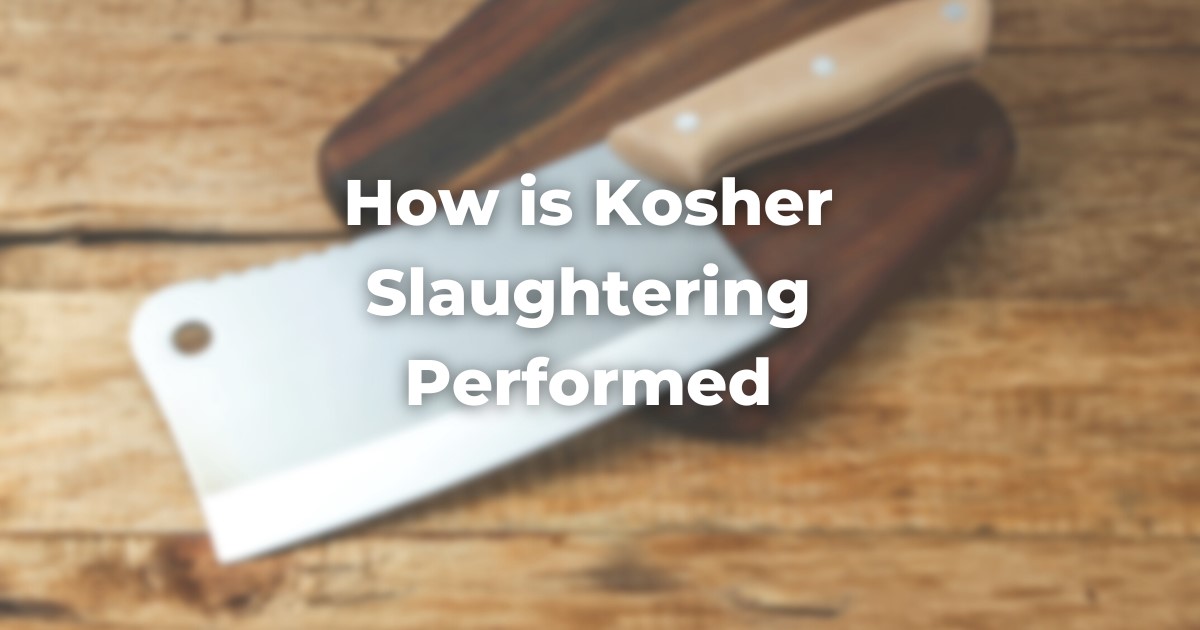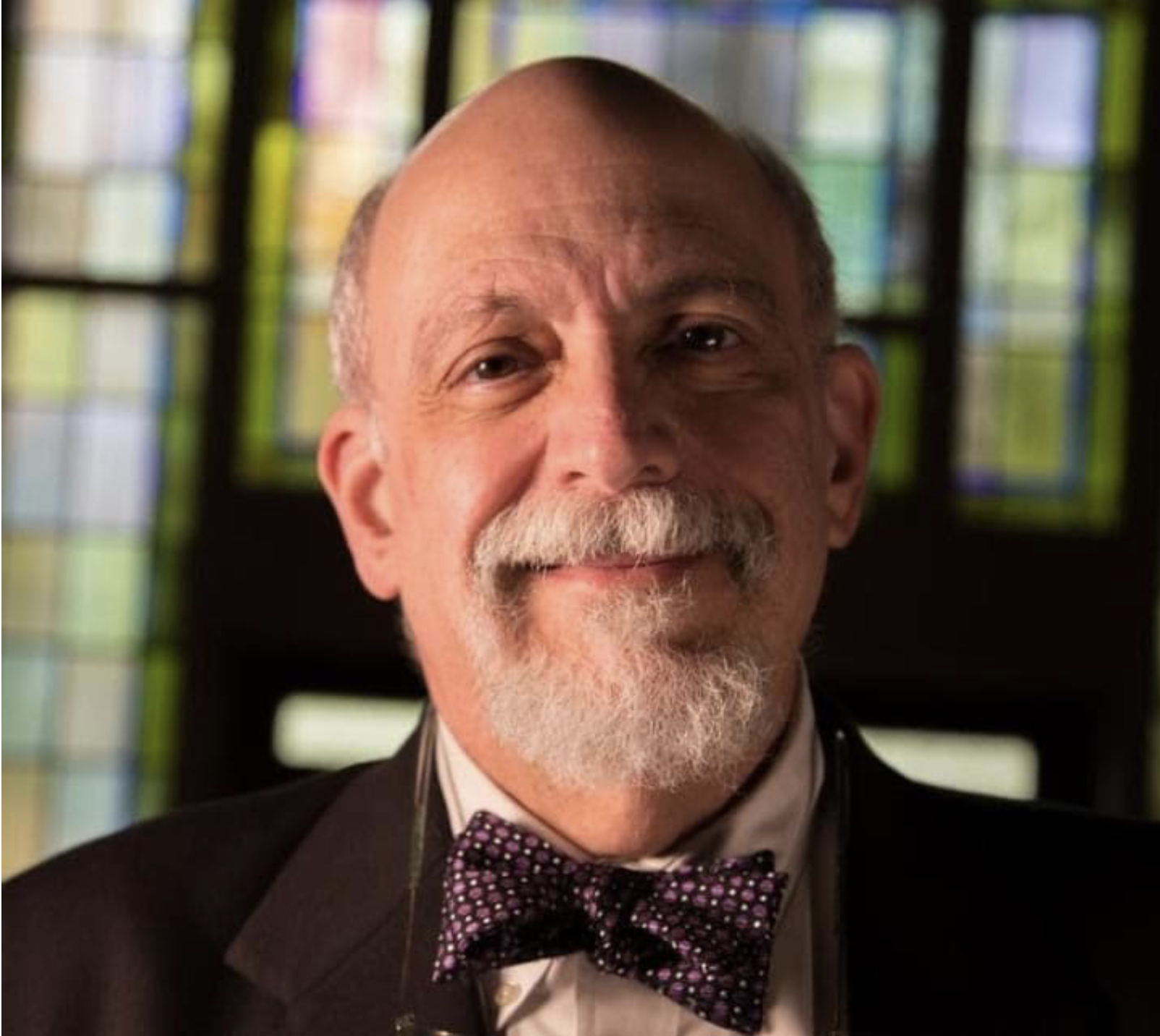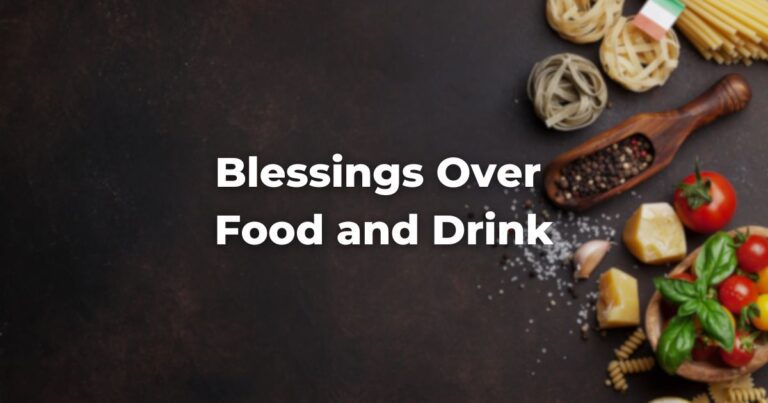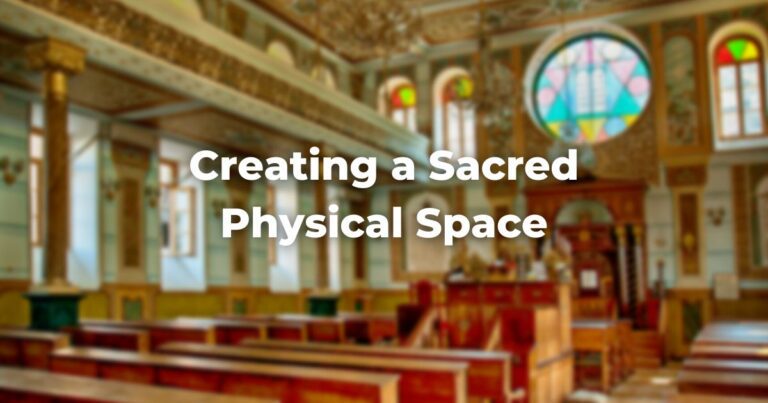In order to ensure that as much blood as possible is drained from the animal, a very specific manner of slaughter, known as sh’ḥitah (shechita), was instituted.
The method was established to promote both the greatest possible loss of blood while reducing the level of pain the animal experiences to an absolute minimum. Mammals and fowl must be slaughtered according to the laws of kosher sh’ḥitah, but not fish (Shulchan Arukh, Yoreh Deah 21:1–2).
To maximize the flow of blood in sh’ḥitah, the animal’s neck must be slit with a very sharp knife. In the case of mammals, both the trachea and esophagus must be cut; for birds, at least one of the two must be cut (Shulchan Arukh, Yoreh Deah 21:1–2).
This method of slaughter causes very little pain, as the animal quickly loses consciousness from the swift loss of blood. Death then occurs after a few minutes, sometimes even sooner.
The professional slaughterer, called a shochet or a shochetet (plural: shoch’tim), is required to be a religious and caring individual.
Indeed, one of the fundamentals of the whole system of kashrut is the unyielding requirement that the people who have accepted the responsibility of taking the lives of animals themselves be acutely aware of the preciousness—and the sanctity—of God’s gift of life.
Although eating meat outside the sacrificial context is formally allowed by the TorahRefers to the first five books of the Hebrew Bible, the Tanakh, also called the Five Books of Moses, Pentateuch or the Hebrew equivalent, Humash. This is also called the Written Torah. The term may also refer to teachings that expound on Jewish tradition. Read more at Deuteronomy 12:15 (which was apparently intended to clear up the ambiguity of Leviticus 17), there is little question that the Torah posits the ideal menu to be the vegetarian one offered to Adam and Eve in the Garden of Eden.
Therefore the slaughterer’s role is, by definition, an ethically difficult one because the act of taking an animal’s life so that people can eat meat is, at best, a compromise.
With that in mind, the halakhah mandates that the slaughterer of God’s creatures must be scrupulous in terms of devotion to even the slightest detail of the law. To take life, even animal life, requires that the slaughterer be wholly attuned to the serious nature of the activity and never callous or uncaring.
In light of the serious religious nature of this task, it is required that a blessing be recited before the animal is killed. The blessing itself is:
בָּרוּךְ אַתָּה ה’ אֱלהֵֽינוּ מֶֽלֶךְ הָעוֹלָם אֲשֶׁר קִדְּשָׁנוּ בְּמִצְוֹתָיו וְצִוָּנוּ עַל הַשְּׁחִיטָה
(barukh attah adonai, eloheinu, melekh ha-olam, asher kidd’shanu b’mitzvotav v’tziv-vanu al ha-sh’ḥitah)
“Praised are You, Adonai, our God, Sovereign of the universe, who, sanctifying us with divine commandments, has commanded us regarding slaughter”.
Praising God, the Source of life, at the moment of taking a life forces the slaughterer to work in a state of constant awareness that the serious task at hand, for all that it is sacred work, is also a concession to human weakness and to the voraciousness of human appetite.
The slaughterer’s tools include a set of knives that must be sharpened to the highest possible level.
Even so, the knife must be inspected anew for the slightest nick just before each use, lest such an imperfection in the blade cause a tear in the animal’s flesh when its neck is slit. After the animal has been slaughtered, the knife must be inspected again to ensure that nothing has interfered with the actual cutting.
All this is intended to spare the animal the realization that its life is ending until it loses consciousness just prior to actually dying.
Some countries have banned sh’ḥitah, ostensibly out of concern for the well-being of animals.
Whatever the real motivation behind such legislation, however, the halakhah itself has the means to deal with issues of animal cruelty as they arise. For example, large industrial abattoirs need a system to keep animals still and in place while the shochet works.
There are two methods in use to accomplish this. The more modern method is to have the animal restrained comfortably in a special pen with a device holding the animal’s head in place while exposing the neck to the slaughterer’s blade.
The older method requires that the animal be shackled by a back leg, then hoisted up so that it is suspended upside down, and only then conveyed by machine to the shochet.
While this method does not seem technically to contravene the laws that govern sh’ḥitah, it is widely understood today that this method of restraining animals in the abattoir is actually quite cruel.
In 2000, therefore, the Committee on Jewish Law and Standards forbade this practice as inconsistent with the highest values of halakhically mandated kindness to animals even at the very end of their lives.
“Now that kosher, humane slaughter using upright pens is both possible and widespread,” the CJLS paper declares, “we find shackling and hoisting to be a violation of Jewish laws forbidding cruelty to animals” (fom CJLS Responsa Shackling and Hoisting).
Slaughtering animals for kosher consumption is a very precise, extremely technical procedure requiring expertise in many areas.
As such, the slaughter of animals for consumption may be done only by trained shochet.
Special kashrut issues relating to the way veal calves are raised for slaughter are discussed in a detailed responsum by Rabbi Pamela Barmash approved by the CJLS in 2007..
Adapted with permission from The Observant Life.
Authors
-

Rabbi Paul S. Drazen (1951-2018) spent two-thirds of his rabbinic career serving individual congregations and one-third on the staff of USCJ, all the while creating programs and educational opportunities to make Jewish observance and practice clear, accessible, and attainable for everyone.
View all posts -

The Observant Life: The Wisdom of Conservative Judaism for Contemporary Jews distills a century of thoughtful inquiry into the most profound of all Jewish questions: how to suffuse life with timeless values, how to remain loyal to the covenant that binds the Jewish people and the God of Israel, and how to embrace the law while retaining an abiding sense of fidelity to one’s own moral path in life. Written in a multiplicity of voices inspired by a common vision, the authors of The Observant Life explain what it means in the ultimate sense to live a Jewish life, and to live it honestly, morally, and purposefully. The work is a comprehensive guide to life in the 21st Century. Chapters on Jewish rituals including prayer, holiday, life cycle events and Jewish ethics such as citizenship, slander, taxes, wills, the courts, the work place and so much more.
View all posts







